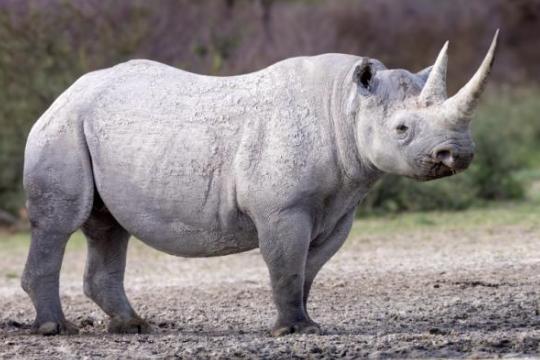I recently attended a showing of Oscar-nominated short films. Most were riveting, but none more so than 'The Last Ranger,' a profoundly disturbing production about the conflict between poachers and the (too) few rangers charged with protecting animals, in this case, white rhinos, in the Amakhala Game Reserve in South Africa.
The film pulls no punches. The animals are tranquilized and a chain saw used to take off the horns and to be extra greedy, a fair amount of tissue below them, typically killing the animal. It is not easy to watch. What is behind these acts?
Old is good. Except when it's not.
It's oh-so-popular to reject 'Western medicine' in favor of 'Traditional Chinese Medicine' (TCM). The logic, such as it is, goes something like this: Since these remedies were used 4,000 years ago, we are somehow ignoring 4,000 of wisdom behind them based on the "old = better" fallacy.
Some believe that TCM products and are interchangeable with (or superior to) modern medicine and that by not considering these as alternatives, we are somehow ignoring or missing out on a miracle cure. Others argue that these products cannot be patented by "Big Pharma," thus depriving us of time- tested natural medications–a bunch of nonsense.
This is not to say that some of the herbs, etc. that have been used don't have medical value or promise, but this is not within the scope of this article. A comprehensive Cochrane Review concludes:
“Although TCM-related Cochrane Systematic Reviews have covered a large number of diseases, the current quality of evidence is insufficient to support the efficacy of most TCM interventions.”
Jiarui Wu et. at., Network pharmacology: a crucial approach in traditional Chinese medicine research, Chinese Medicine volume 20, Article number: 8 (2025)
Beyond the lack of scientific evidence, blind faith in TCM has devastating consequences—particularly for endangered animals. Nowhere is this clearer than in the poaching of rhinos for their horns, driven by the baseless belief that they hold medicinal properties.
It's not just rhino horns.
Rhinos aren’t the only victims of this barbaric nonsense. The obsession with animal-based “remedies” extends to many animals, especially tigers, whose body parts have been harvested for equally ridiculous reasons.
The complete list of the use of animal parts used for ridiculous reasons would make this article roughly the length of “War and Peace,” so I'll just focus on a couple of others.
• Tiger penises have been part of TCM for thousands of years for their supposed ability as an aphrodisiac and treatment for male impotence; and although illegal (and without merit), there is still a black market for them. Other tiger parts are also in demand. Bones are a valued material since they are thought to provide (because tigers are strong) and also to treat inflammation and arthritis. There is more, some of which and some of it sounds like standup comic material:
"Tiger fat is supposed to heal rheumatism, whiskers should relieve from teeth pain, brain heals laziness and acne, claws should serve against insomnia and penis as an aphrodisiac. Trade in tiger penises is very lucrative in Asia. However, it is very interesting that tiger penis is actually very small and therefore big imitations made of deer penises appear on the market." [Oy]
Source: Stolen Wildlife
• Cattle gallstones have been recently use because they are worth twice the price of that of gold. Some Brazilians now raise cattle for their gallstones, which are worth more than the cow.
According to the Chinese Pharmacopoeia the stones can be used:
"[T]o dissipate phlegm for resuscitation, cool the liver to extinguish wind, clear heat and remove toxins, and treat convulsions, epilepsy, mouth and tongue sore, sore throat, toothache, redness, swelling, and pain of the eye, furunculosis, scrofula, herpes zoster, Japanese encephalitis, ulcerative colitis, chronic hepatitis B, stroke, coronary heart disease, acute pancreatitis, upper respiratory tract infection, and essential hypertension."
While modern research is exploring possible utility for the stones (fever, inflammation, and liver protection), the list above is absurd; effectiveness against these is unlikely. No single drug or other substance treats such a wide variety of unrelated conditions.
Rhino horns are thoroughly useless - except to the rhino.
It is especially galling to see rare animals hunted for body parts that have ZERO therapeutic values. This is most certainly the case with rhinos.
Rhino horns are made almost entirely of keratin, the same protein that makes up our fingernails, hair, and claws and hooves for those of you who happen to sport them. Why are these animals slaughtered for a common protein? It's believed that they act as an aphrodisiac. Guess what? It doesn’t. If you’re that desperate, just bite your nails—they’re made of the same thing.
Bottom line
If this list reads like something out of a medieval spell book rather than modern medicine, that’s because it is—these claims persist purely due to tradition, not science.
These 'treatments' don't belong in medicine any more than bloodletting, mercury treatments, and trepanation (drilling holes in the skull to release 'evil spirits'). It's all harmful nonsense
It is even more appalling that outdated beliefs, magical thinking, and ignorant nonsense persists in the 21st century. The combination of foolish superstitions, wishful thinking and the belief in medical magic takes an enormous (and non-productive) toll on endangered or threatened animals. This cannot possibly be better stated than by Liz P. Y. Chee, the author of the 2021 book 'Mao's Bestiary.'
If Chinese medicine retains an Achilles’ heel in the present century, it is the widespread perception that it is contributing to a holocaust among wild creatures... and in so doing supporting a global criminal enterprise of animal poaching and trafficking. Moreover... such medicines are often condemned “as being as ineffective as they are unethical,” even by some Chinese physicians. Many of these products are medically useless at best...and in some cases, actually harmful.
Liz P. Y. Chee, 2021




